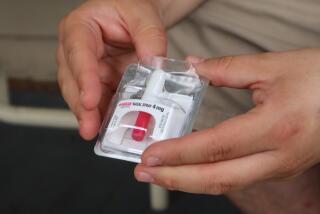State Dental Board to Propose a Law on Oral Sedatives
SAN DIEGO â The California Board of Dental Examiners voted Friday to propose legislation designed to regulate the use of oral sedatives in children. This is in response to the death of a 4-year-old Santa Ana boy and others who have died while being given oral sedatives by dentists.
The board did not specifically address its own investigation into circumstances surrounding the treatment of Javier Villa, who died Aug. 4, hours after being taken to Megdal Dental Care in Santa Ana.
The boy was given an oral sedative and an injection of painkiller before having eight cavities filled. Police and state investigators are awaiting final toxicology reports in connection with the death.
The 14-member board also voted Friday at its meeting here to set up an ad hoc committee to develop the final language of proposed legislation, which the board will then reconsider at a meeting in San Francisco in November.
Board President Peter Hartmann said any legislation pertaining to the use of oral sedatives in children would also cover the developmentally handicapped but would most likely not result in legislation until January 1999, at the earliest.
Although the board is investigating Javier Villaâs death and the clinic where he was treated, Fridayâs session involved only âpolicy questions,â Hartmann said.
The board noted that, since 1976, 10 children in California have experienced dental-related deaths, eight from the use of oral sedatives.
âI think we recognize we have a problem,â said board member and dentist Robert Christoffersen. âOne death is one death too many. In the future, we hope to reduce incidents like these to zero.â
But several dentists expressed concern that legislation more tightly regulating the use of oral sedatives could further hinder the access of children and their parents to proper dental care, especially among low-income families.
Paul Reggiardo, a pediatric dentist in Huntington Beach and a trustee of the American Academy of Pediatric Dentistry, said current studies indicate that 80% of American children have dental decay by age 3.
Oral sedation is one of the few options available for addressing âuncooperative or minimally cooperativeâ patients, which children younger than 5 tend to be, Reggiardo said, echoing the sentiments of several dentists who warned against over-regulation.
âThe media and the politics of this situation are probably dictating that we move quickly,â said David Perry, a dentist in Alameda, who spoke before the board. âBut the danger is coming up with a knee-jerk solution that helps no one.â
But Sylvia Muscia, one of four lay members of the board, and a grandmother from San Luis Obispo, said any parent or grandparent only wants to know that âthe most important person in our lives--our child or grandchild--is receiving the safest professional care.â
Muscia said the last thing she wanted to hear from a dentist who might lack the proper training in the use of oral sedatives is â âWell, maybe itâs this amount, or no, maybe itâs that amount.â . . . Surely, there must be some way that we as a board can guard against that.â
The use of oral sedatives is currently exempted from statutes covering the regulation of conscious sedation in California, meaning that dentists have to obtain a permit from the state to use intravenous sedatives but not oral sedatives.
Fridayâs proposed legislation, if adopted by the Legislature, would probably end the exemption, Hartmann said, and require all dentists to obtain permits for the use of any sedatives.
More to Read
Sign up for Essential California
The most important California stories and recommendations in your inbox every morning.
You may occasionally receive promotional content from the Los Angeles Times.










